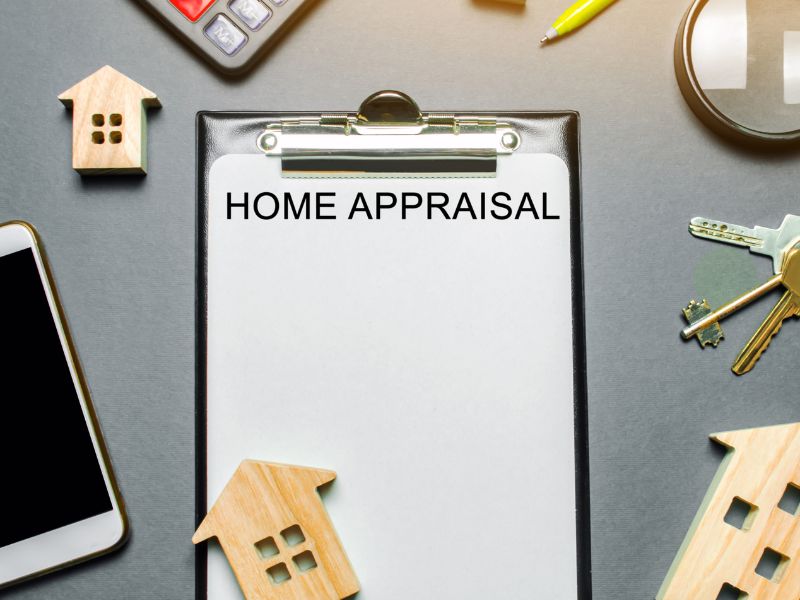Loan-to-Value Ratio (LTV): The Key to Mortgage Approval
 Securing a mortgage is a significant milestone on the path to homeownership. As you embark on this journey, you’ll likely encounter various terms and ratios that play a crucial role in the approval process. One such essential factor is the Loan-to-Value ratio, commonly known as LTV. Understanding LTV is paramount, as it not only influences your chances of mortgage approval but also affects interest rates and the required down payment. We will delve into the significance of LTV and its pivotal role in the mortgage application process.
Securing a mortgage is a significant milestone on the path to homeownership. As you embark on this journey, you’ll likely encounter various terms and ratios that play a crucial role in the approval process. One such essential factor is the Loan-to-Value ratio, commonly known as LTV. Understanding LTV is paramount, as it not only influences your chances of mortgage approval but also affects interest rates and the required down payment. We will delve into the significance of LTV and its pivotal role in the mortgage application process.
What is Loan-to-Value Ratio (LTV)?
Loan-to-Value ratio is a financial metric that expresses the relationship between the loan amount and the appraised value of the property. Simply put, it’s the percentage of the property’s value that you borrow through a mortgage. LTV is calculated by dividing the loan amount by the appraised value and multiplying the result by 100. LTV = (Loan Amount / Appraised Value) * 100
The Significance of LTV in Mortgage Approval:
Risk Assessment:
Lenders use LTV as a risk assessment tool. A higher LTV indicates a higher risk for the lender, as borrowers with a smaller equity stake may be more susceptible to default.
A lower LTV, on the other hand, signifies a larger down payment and a higher level of ownership in the property, which is viewed favorably by lenders.
Impact on Interest Rates:
LTV has a direct impact on the interest rates offered by lenders. Higher LTV ratios often result in higher interest rates to compensate for the increased risk borne by the lender.
Conversely, a lower LTV may lead to more favorable interest rates, potentially saving borrowers a significant amount of money over the life of the loan.
Down Payments:
LTV is inversely related to the down payment required. The lower the LTV, the larger the down payment, and vice versa.
For example, an 80% LTV implies a 20% down payment, while a 95% LTV means a 5% down payment. Lenders generally have specific thresholds for maximum LTV ratios they are willing to accept.
Private Mortgage Insurance (PMI):
When the LTV exceeds a certain threshold, typically 80%, lenders may require borrowers to purchase Private Mortgage Insurance (PMI). PMI protects the lender in case of borrower default but adds an additional cost for the borrower.
Understanding the Loan-to-Value ratio is essential. It serves as a critical indicator of risk for lenders, influencing interest rates and down payment requirements. As you navigate the mortgage application process, paying attention to your LTV ratio and taking steps to improve it—such as making a larger down payment—can enhance your chances of securing a favorable loan. By decoding the complexities of LTV, you empower yourself to make informed decisions that pave the way to successful homeownership.

 Mortgage prepayment penalties are fees charged by lenders when borrowers pay off their mortgages before the agreed-upon term. These penalties are designed to compensate lenders for potential lost interest income and can significantly impact borrowers who want to pay off their mortgages early. Here’s what borrowers should watch out for and how to avoid or mitigate prepayment penalties:
Mortgage prepayment penalties are fees charged by lenders when borrowers pay off their mortgages before the agreed-upon term. These penalties are designed to compensate lenders for potential lost interest income and can significantly impact borrowers who want to pay off their mortgages early. Here’s what borrowers should watch out for and how to avoid or mitigate prepayment penalties: Choosing the right mortgage term is a critical decision when purchasing a home. The two most common options are 15-year and 30-year mortgage terms. Let’s compare the advantages and disadvantages of each to help you make an informed decision:
Choosing the right mortgage term is a critical decision when purchasing a home. The two most common options are 15-year and 30-year mortgage terms. Let’s compare the advantages and disadvantages of each to help you make an informed decision: Embarking on a home construction project is an exciting journey that can lead to your dream home becoming a reality. However, the financial aspects of building a home can be challenging to navigate. This is where construction-to-permanent loans come into play. These unique financing options offer a range of benefits that can make the construction process more manageable and affordable. We will discuss the advantages of construction-to-permanent loans and how they can benefit homeowners.
Embarking on a home construction project is an exciting journey that can lead to your dream home becoming a reality. However, the financial aspects of building a home can be challenging to navigate. This is where construction-to-permanent loans come into play. These unique financing options offer a range of benefits that can make the construction process more manageable and affordable. We will discuss the advantages of construction-to-permanent loans and how they can benefit homeowners. The journey to homeownership is a thrilling adventure, but it comes with its fair share of challenges. One crucial aspect that can significantly influence the mortgage process is the appraisal value of your prospective home. The appraisal value plays a pivotal role in determining the amount a lender is willing to extend to you, making it essential to understand its impact. We will explore the intricacies of how appraisal values can affect your mortgage and provide valuable tips on handling discrepancies.
The journey to homeownership is a thrilling adventure, but it comes with its fair share of challenges. One crucial aspect that can significantly influence the mortgage process is the appraisal value of your prospective home. The appraisal value plays a pivotal role in determining the amount a lender is willing to extend to you, making it essential to understand its impact. We will explore the intricacies of how appraisal values can affect your mortgage and provide valuable tips on handling discrepancies.